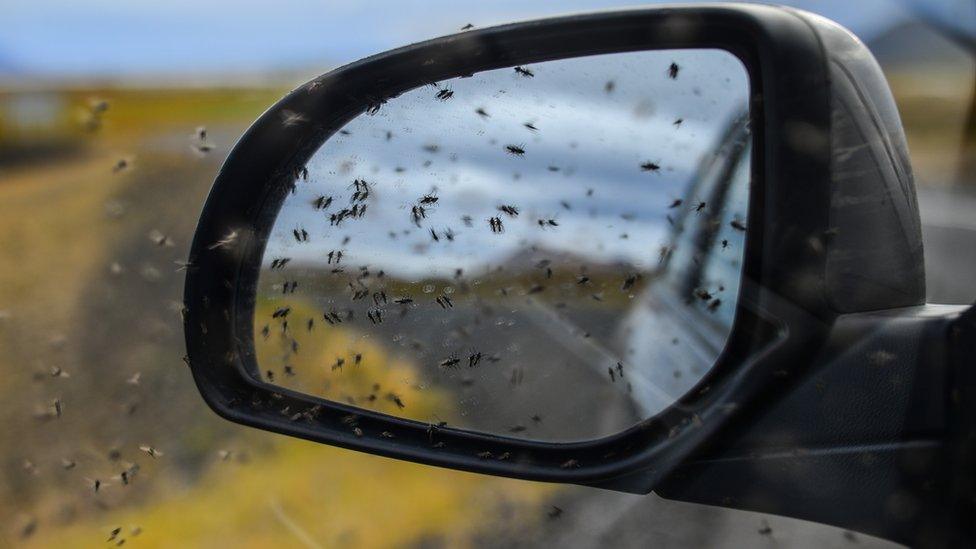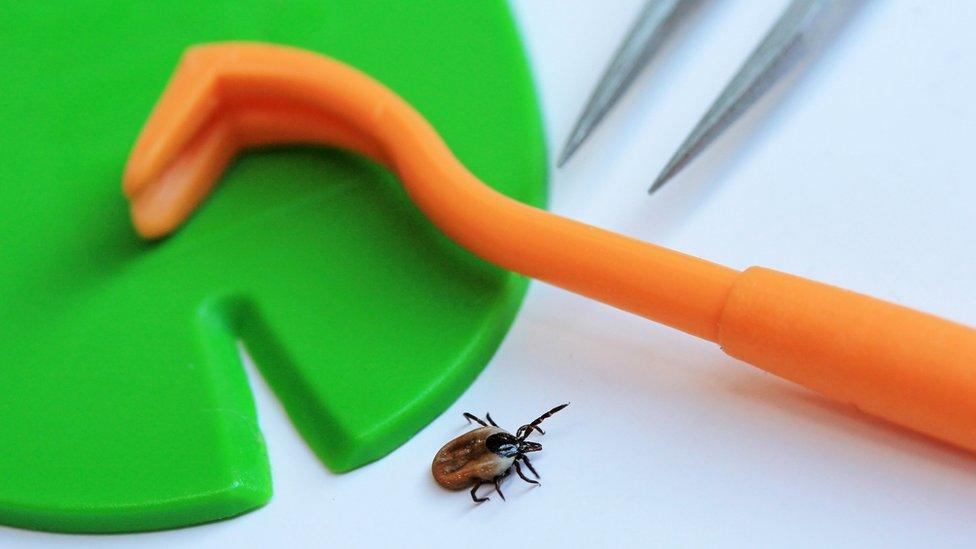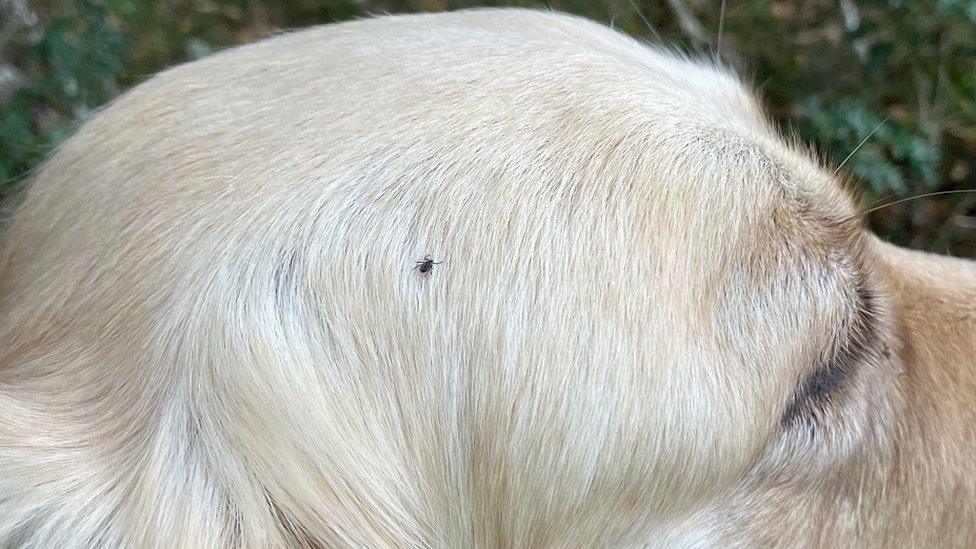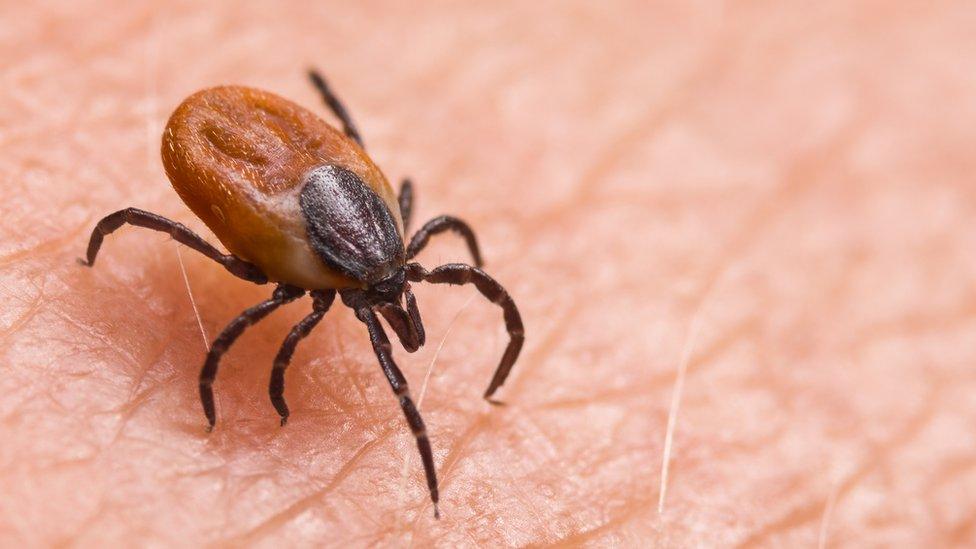Scotland's bloodsucking pests have mixed fortunes
- Published

The lifecycle of biting midges was disrupted by weather conditions in some parts of Scotland this year
This year's weather appears to have taken a bite out of midge numbers but benefited another pest, say experts.
Biting midgies are notorious in parts of Scotland where they swarm in their millions.
But the Scottish Midge Forecast said an unusually cool spring followed by a hot summer had disrupted the tiny creatures' lifecycle in some places.
Meanwhile, mild weather later in the year appears to have extended the season for ticks.
The parasitic spider-like pests are usually encountered from early spring through to October, but this year so far were still being seen in the middle of November.
Scientists have previously warned that ticks, whose bite can cause harmful infections such as Lyme disease, looked to be becoming a year-round threat.
The midge forecast, run by Dundee-based insect repellent-maker APS Biocontrol Ltd, said this year's weather had played havoc with the lifecycle of biting midges in some parts of Scotland.
A forecaster said: "It all started with an unusually cool spring that delayed midge emergence by around two weeks, leading to a later than usual first generation midge peak in mid June.
"Eggs from these midges would normally give rise to a second-generation peak five to six weeks later, but this was significantly suppressed by the hot, dry weather experienced in Scotland - and the rest of the UK - this year.
"Being so tiny, with just a 2mm wingspan, midges dehydrate very quickly in warm, dry weather and although resting up in the vegetation improves their survival, it means they have fewer opportunities to fly in search of a bloodmeal required to mature their eggs."

Mild weather appears to have benefited ticks, this one pictured next to tick removal tools
Low numbers of midges were recorded in traps set in traditional "hotspots" in Glencoe in the Highlands and Inveraray in Argyll and Bute.
Wetter and cooler weather later in the summer did result in a surge in midge numbers in parts of northern Scotland, according to the forecast.
The forecast added that it was not clear if this year was a one-off or the start of a trend.
Scientists have previously calculated there could be an estimated 21 billion biting midges in the Highlands and Islands, the region they are most commonly encountered.
That figure was for females of the species, which feed on blood which they require to mature their hundreds of eggs.
In 2015, autumn's warm weather produced a rare third hatching of biting midges.

A tick picked up by a dog in woodland in Inverness last month
What makes viruses tick?, external - a project led by the Brennan Lab at the MRC-University of Glasgow Centre for Virus Research and involving The Conservation Volunteers - is mapping where and when people are finding ticks.
The project's team said there were suggestions of high tick numbers this year.
Sam Langford, of the University of Glasgow Centre for Virus Research, said: "Even with the lower temperatures coming in we're continuing to receive tick sightings from people all across the country, with over 700 sightings being logged on our Tick Map.
He added: "As part of this, we have had several anecdotal reports from members of the public telling us that 2022 has been a particularly bad year for tick sightings in their local area."
"We'd encourage anyone who comes across a tick to report their sighting on our online platform, and continue to take precautions whenever they spend time in outdoor spaces.
"If they have any concerns about a recent tick bite, we'd recommend contacting their GP for further advice."
Related topics
- Published11 November 2022

- Published1 June 2022
